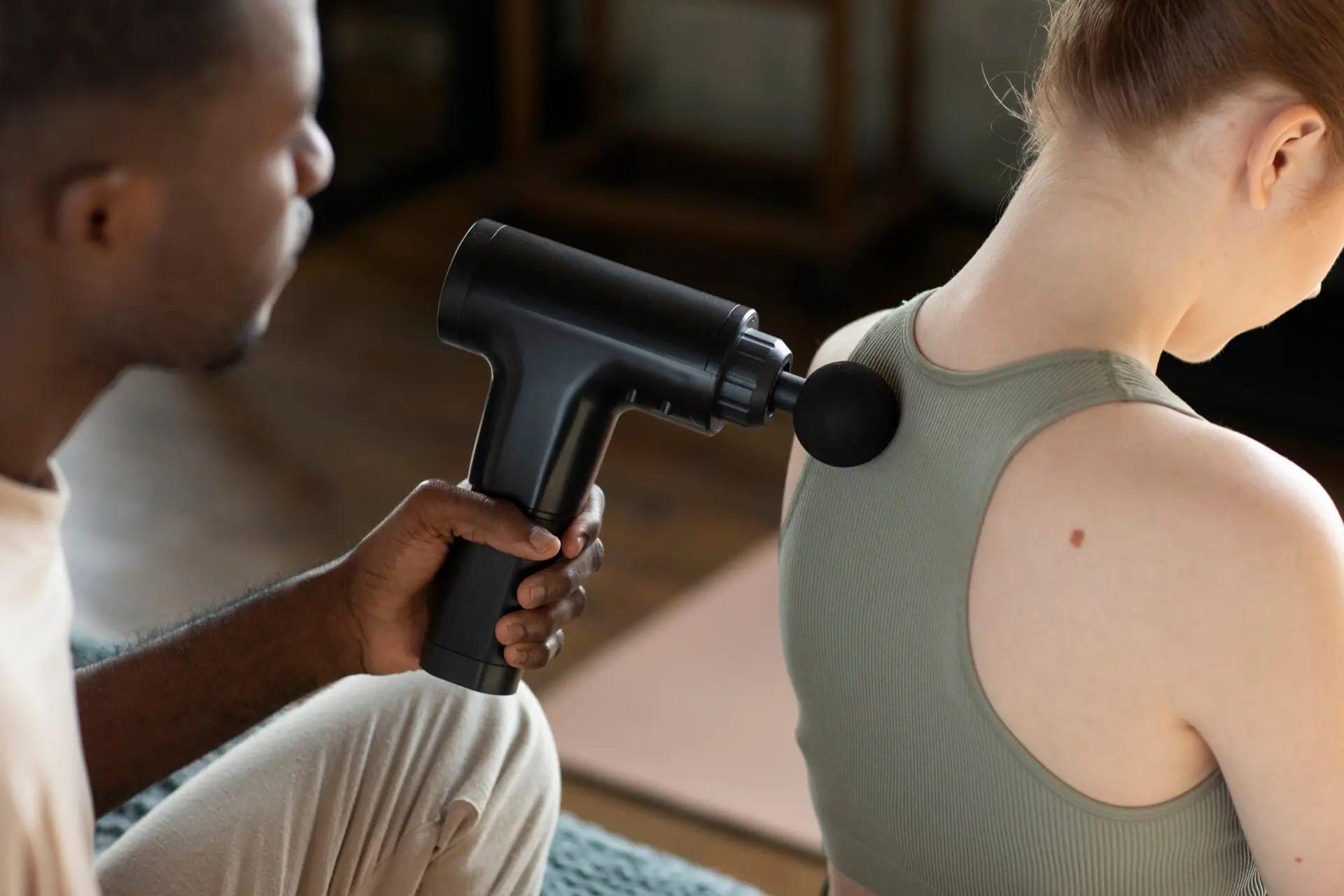Trigger points, often referred to as “knots,” are localized areas of muscle tightness that can cause significant discomfort and radiating pain. These hyperirritable spots in the muscle fibers can develop from various factors, including overuse, stress, poor posture, or injury. Understanding how to identify and manage trigger points is essential for pain relief and restoring muscle function.
What Are Trigger Points?
Trigger points are small, tight areas within a muscle that result from sustained tension or microtrauma. They are classified into two types:
- Active Trigger Points: These cause pain even at rest and often radiate pain to other areas of the body (referred pain). For instance, a trigger point in the trapezius muscle might cause headaches or pain in the neck and shoulders.
- Latent Trigger Points: These do not cause pain unless pressure is applied. However, they can still restrict movement and contribute to muscle stiffness.
Trigger points are commonly found in areas like the neck, shoulders, lower back, and hips, often contributing to chronic pain syndromes such as myofascial pain syndrome.
How Do Trigger Points Cause Pain?
Trigger points form when muscle fibers become overstimulated and fail to relax, leading to decreased blood flow and a buildup of metabolic waste. This creates a cycle of pain and dysfunction:
- Restricted blood flow reduces oxygen supply and hinders waste removal.
- Muscle tightness causes discomfort and reduces range of motion.
- Referred pain spreads discomfort to other areas, often misleading the diagnosis.
This cycle perpetuates unless the trigger point is addressed and released.
Symptoms of Trigger Points
- Localized muscle pain and tenderness
- Referred pain to nearby areas
- Muscle stiffness and reduced range of motion
- Sensations of tingling, numbness, or weakness in affected areas
- Headaches or migraines (when trigger points are in the upper body)
Managing Trigger Points for Pain Relief
Effective management of trigger points involves identifying and releasing these tight areas to restore normal muscle function. Here are some proven techniques:
1. Manual Trigger Point Therapy
Skilled therapists use their hands or specialized tools to apply sustained pressure to the trigger point. This technique helps release tension, improve blood flow, and reduce pain. At Angel Touch, our practitioners incorporate trigger point therapy into massage sessions for targeted pain relief.
2. Stretching and Muscle Activation
Gentle stretching exercises help lengthen the muscle fibers and relieve tension. Muscle activation techniques, which involve contracting and relaxing the affected muscle, can also help reset the muscle’s natural resting state.
3. Dry Needling
This technique involves inserting fine needles directly into the trigger point to stimulate a twitch response, which releases tension and promotes healing. Dry needling has been shown to be effective in reducing pain and improving muscle function (1).
4. Heat and Cold Therapy
Applying heat increases blood flow and helps relax tight muscles, while cold therapy reduces inflammation and numbs the pain. Alternating between heat and cold can be particularly effective for acute trigger point pain.
5. Self-Massage Tools
Foam rollers, massage balls, and handheld massage devices allow individuals to apply pressure to trigger points at home. Regular use of these tools can prevent trigger points from becoming chronic.
Preventing Trigger Points
Preventing the recurrence of trigger points involves adopting healthy lifestyle habits and maintaining good musculoskeletal health:
- Maintain Proper Posture: Poor posture places undue stress on muscles, leading to the formation of trigger points. Ergonomic adjustments at work and during daily activities can help.
- Stay Active: Regular physical activity improves circulation and prevents muscle stiffness. Incorporate stretching and strengthening exercises to keep muscles balanced.
- Manage Stress: Chronic stress increases muscle tension, making trigger points more likely to develop. Stress management techniques such as meditation, deep breathing, and yoga can help.
- Hydrate and Nourish: Dehydration and poor nutrition can contribute to muscle dysfunction. Ensure adequate water intake and a balanced diet to support muscle health.
Trigger Point Therapy at Angel Touch
At Angel Touch, we specialize in trigger point therapy as part of our holistic approach to pain management. Our trained therapists use precise techniques to identify and release trigger points, providing immediate relief and improving long-term muscle function. Whether you’re dealing with chronic pain or recovering from an injury, our personalized treatments aim to restore your well-being.
Conclusion
Trigger points are a common source of pain and discomfort, but they don’t have to control your life. With the right techniques and professional care, you can effectively manage and prevent trigger points, leading to improved muscle function and a pain-free lifestyle. At Angel Touch, we’re here to guide you on your journey to recovery and optimal health.
References
- Dommerholt, J., & Huijbregts, P. (2011). Myofascial Trigger Points: Pathophysiology and Evidence-Informed Diagnosis and Management. Jones & Bartlett Learning.
- Fernández-de-Las-Peñas, C., & Simons, D. G. (2018). Trigger point dry needling: evidence, and clinical implications. Journal of Manual & Manipulative Therapy, 26(3), 160-166.
- Travell, J. G., Simons, D. G., & Simons, L. S. (1999). Myofascial Pain and Dysfunction: The Trigger Point Manual. Lippincott Williams & Wilkins.




